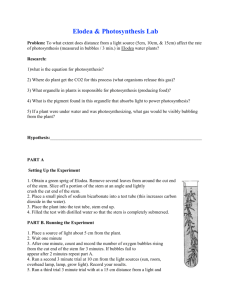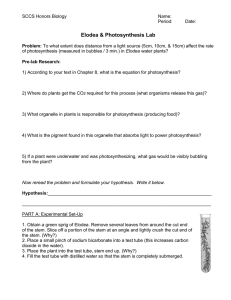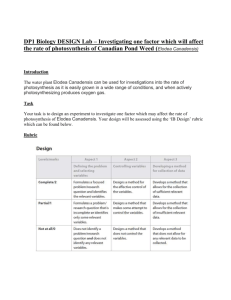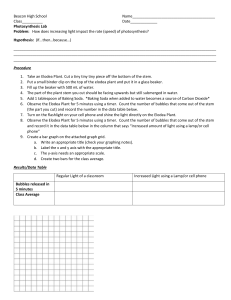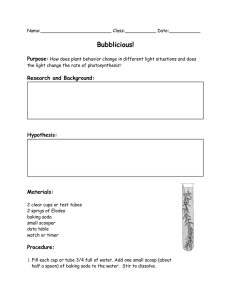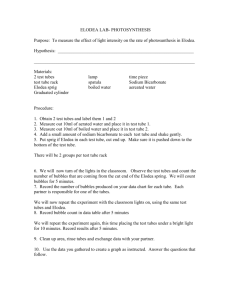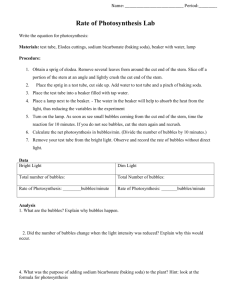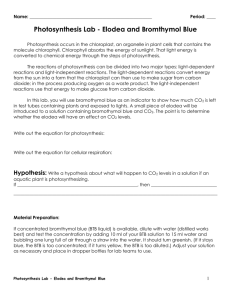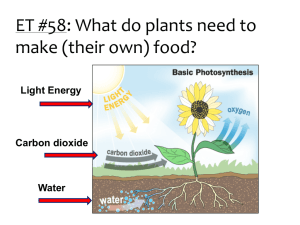Elodea Photosynthesis Lab: Light Intensity & Rate
advertisement
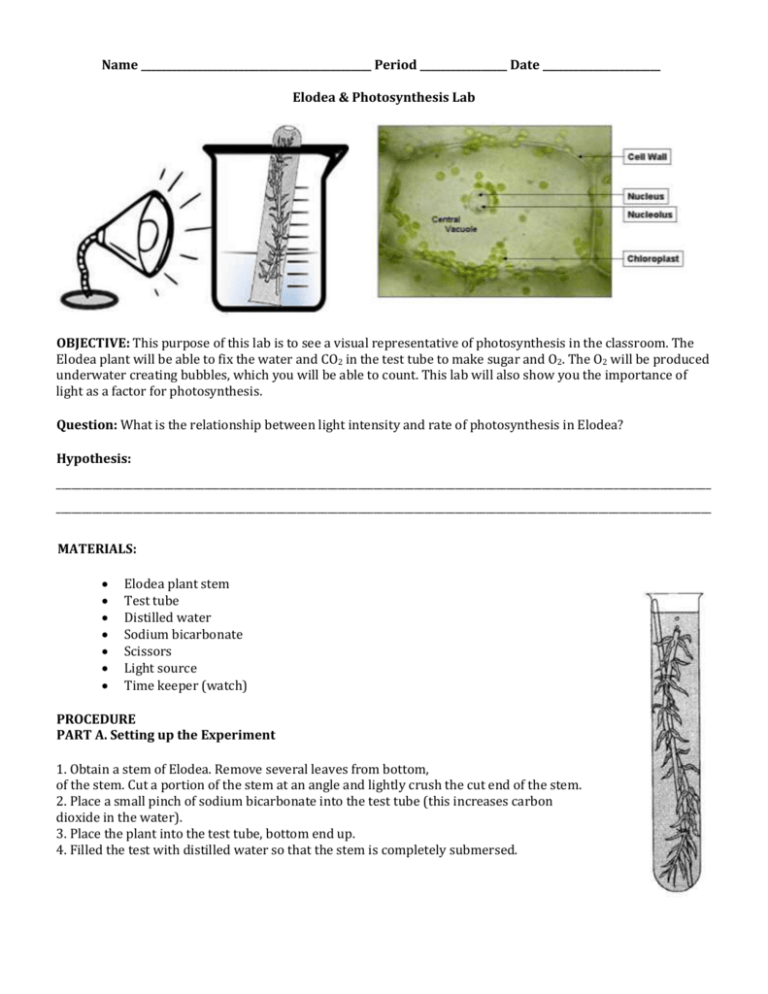
Name _____________________________________________ Period _________________ Date _______________________ Elodea & Photosynthesis Lab OBJECTIVE: This purpose of this lab is to see a visual representative of photosynthesis in the classroom. The Elodea plant will be able to fix the water and CO2 in the test tube to make sugar and O2. The O2 will be produced underwater creating bubbles, which you will be able to count. This lab will also show you the importance of light as a factor for photosynthesis. Question: What is the relationship between light intensity and rate of photosynthesis in Elodea? Hypothesis: ________________________________________________________________________________________________________________________________ ________________________________________________________________________________________________________________________________ MATERIALS: Elodea plant stem Test tube Distilled water Sodium bicarbonate Scissors Light source Time keeper (watch) PROCEDURE PART A. Setting up the Experiment 1. Obtain a stem of Elodea. Remove several leaves from bottom, of the stem. Cut a portion of the stem at an angle and lightly crush the cut end of the stem. 2. Place a small pinch of sodium bicarbonate into the test tube (this increases carbon dioxide in the water). 3. Place the plant into the test tube, bottom end up. 4. Filled the test with distilled water so that the stem is completely submersed. PART B. Running the Experiment 1. Place a source of light about 5 cm from the plant. 2. Wait one minute 3. After one minute, count the amount of bubbles of oxygen rising from the cut end of the stem for 3 minutes. Keep the tube in the light. If bubbles fail to appear after 2 minutes repeat part A. 4. Run a second 3 minute trial at 10 cm from the light sources. Record your results. 5. Run a third trial 3 minute trial with at a 15 cm distance from a light and record your results. 6. Prepare a graph of your results. The X-axis will be distance from light (IV) and the Y-axis will be number of bubbles in 3 minutes. Data Table: Distance from light source (cm) 5 cm from plant 10 cm from plant 15 cm from plant # bubbles / 3 min Graph (line): 1. According to your text in Chapter 8, what is the equation for photosynthesis? _______________________________________________________________________________________________________________________ 2. Where do plants get the CO2 for this process? _______________________________________________________________________________________________________________________ 3. What organelle in plants is responsible for photosynthesis? _______________________________________________________________________________________________________________________ 4. What is the pigment found in this organelle that absorbs light to power photosynthesis? _______________________________________________________________________________________________________________________ 5. If a plant were under water and was photosynthesizing, what gas would be visibly bubbling from the plant? _______________________________________________________________________________________________________________________ 6. From what substance does the oxygen gas (O2) originate? _______________________________________________________________________________________________________________________ 7. During which photosystem is oxygen gas (O2) made? _______________________________________________________________________________________________________________________ 8. What other ways could this experiment be done in order to test other factors in photosynthesis? _______________________________________________________________________________________________________________________ _______________________________________________________________________________________________________________________ _______________________________________________________________________________________________________________________ _______________________________________________________________________________________________________________________ 9. What did you learn from this experiment? _______________________________________________________________________________________________________________________ _______________________________________________________________________________________________________________________ _______________________________________________________________________________________________________________________ _______________________________________________________________________________________________________________________ 10. Did your data support or reject your hypothesis? Explain. _______________________________________________________________________________________________________________________ _______________________________________________________________________________________________________________________ _______________________________________________________________________________________________________________________ _______________________________________________________________________________________________________________________
